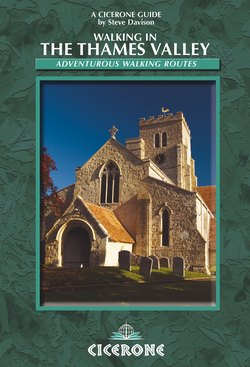Читать книгу Walking in the Thames Valley - Steve Davison - Страница 12
На сайте Литреса книга снята с продажи.
ОглавлениеWALK 5
Faringdon’s Folly
| Start/Finish | Market Place, Faringdon (SU289956); long-stay car parking in Gloucester Street |
| Distance | 12 miles (19.3km) or 7 miles (11.3km) |
| Grade | 2 |
| Time | 5 hours or 3¼ hours |
| Maps | OS Explorer 170/Landrangers 163 and 174 |
| Refreshments | Faringdon – selection of pubs, cafés and shops; Little Coxwell – Eagle Tavern (01367 240120); Littleworth – The Snooty Fox (01367 240549) |
| Transport | Bus links to Swindon and Oxford |
| Note | This route can be shortened by missing out Littleworth. |
This circular walk starts in the picturesque town of Farindgon and heads over Badbury Hill, crowned with the earthworks of an Iron Age hillfort, before descending to Great Coxwell and the Great Barn, one of finest monastic barns in the country. The route then passes through Little Coxwell to reach the little village of Littleworth. From here it’s an easy walk along a broad ridge back to Faringdon passing The Folly, which offers fantastic panoramic views south to the Lambourn Downs including White Horse Hill and north across the Thames Valley and Oxfordshire plain.
At the centre of Faringdon is the Market Place, its unusual 17th-century Town Hall surrounded by interesting old buildings including the Crown Hotel, a 16th-century coaching inn. Just to the north of the Market Place is All Saints Church dating mainly from the 12th and 13th centuries, with a fine Norman doorway and some interesting monuments. In 1864 the Faringdon Railway Company built a single-track railway line, laid to Brunel’s unique 7ft gauge, from Uffington Junction to Faringdon. The line closed to all rail traffic in 1963.
1 SU289956 From the Market Place go along the A417 passing the Red Lion, and bear right along Gloucester Street. At the mini-roundabout go right (A417) and then left along Canada Lane and, where the road bends left, keep ahead along a track passing some houses. Just before the gate, turn right down through the trees to a kissing gate. Walk diagonally left across the field, keeping left of a large sycamore tree; continue along the left field edge. At the corner go through two kissing gates either side of a footbridge and take the left of two paths over the field to a kissing gate in the corner. Turn right and left to cross a footbridge and go through a kissing gate; continue diagonally across the field to a stile and gate. Turn left along a bridleway up through the field, with the hedge on the left to reach a gate. Continue up to pass another gate and keep ahead, passing Badbury Hill House on the right, to reach a gate.
Faringdon’s 17th-century town hall
2 SU266947 Turn right down the lane and left at the wood along a path for Badbury Hill, firstly inside the wood and later inside the field close to the right-hand field edge. Cross a stile and continue through the wood to another stile, turn left up the path, later a track skirting round the earthworks of Badbury Hill.
Badbury Hill is the site of an Iron Age hillfort, probably dating from 600BC, and is crowned with a stand of beech trees, and a carpet of bluebells in the spring.
Continue through the car park and ahead along the road (left) for 200m; turn right at the footpath sign ‘Great Coxwell Barn ½’. Follow the fenced track downhill and, about 20m before the bottom corner, turn half-left through the trees to a stile. Continue across the field and through a hedge gap to pass the Great Barn. Turn right along the road through Great Coxwell for 600m, keeping straight on at the junction, and later bear left to St Giles Church.
The magnificent Great Barn in Great Coxwell
In 1204 King John granted the Manor of Faringdon to the Cistercian Abbey of Beaulieu in Hampshire, and by the mid-13th century the monks had built the Great Barn. This 150ft-(46m-) long tithe barn (a tithe was a form of income tax equating to one tenth of all agricultural produce) was described by William Morris (see Walk 1) as ‘the finest piece of architecture in England, unapproachable in its dignity, as beautiful as a cathedral, yet with no ostentation of the builder’s art’. The barn (now owned by the National Trust) remained under the control of Beaulieu until the Dissolution of the Monasteries in the 16th century.
The Church of St Giles in Great Coxwell, built around 1200, is dedicated to a hermit from the Dark Ages who is the patron saint of the disabled and homeless, and lies at the opposite end of the village. Each year the villagers celebrate the Feast of St Giles, gathering at the Great Barn to bless the spring from which the village probably takes its name – Cogges Well – before proceeding to the church for a service in honour of the saint.
3 SU270934 Turn left in front of the church through the churchyard and a gap in the stone wall. Turn left and follow the edge of the field, before going right following a metalled path across the field and later passing the golf course to reach a road (A420). Cross over and take the disused road opposite; later bear left through Little Coxwell. Ignore the road to the left, but keep ahead to pass the Eagle Tavern on the left, later passing a path that leads to St Mary’s Church (short detour).
